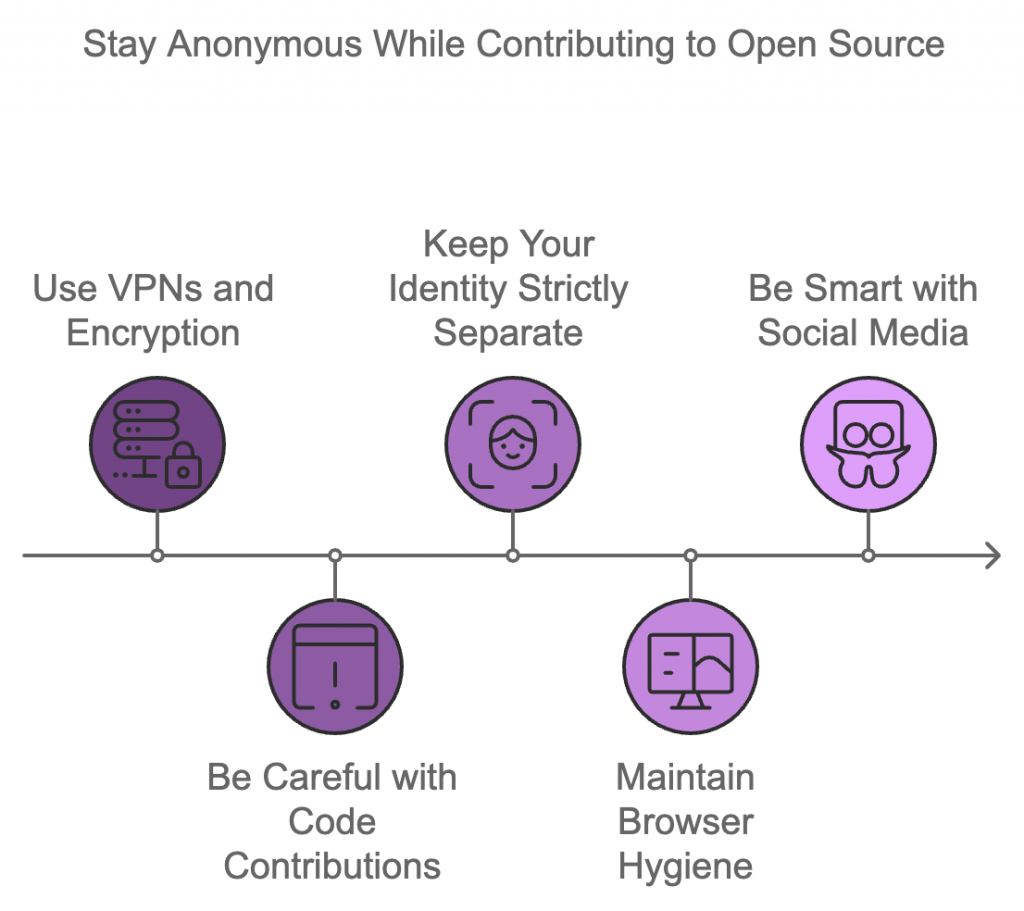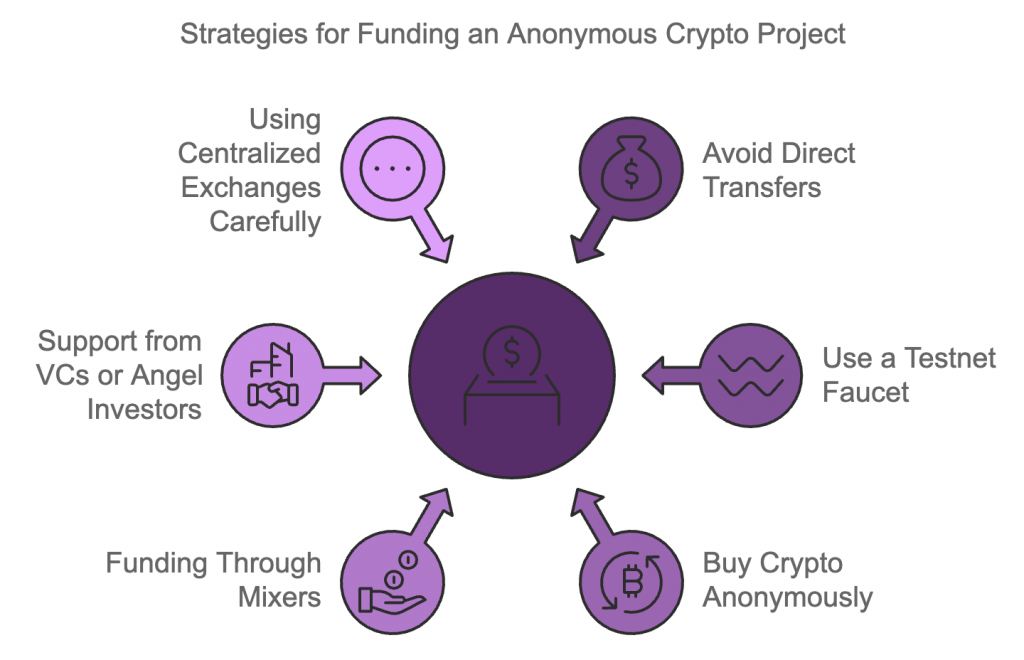How to Stay Anonymous as a Developer in Crypto
In the wild crypto world, staying anonymous as a developer can feel like having a superpower. Imagine working on cutting-edge projects, building the future of decentralized tech, but no one really knows who you are. It’s like being Satoshi Nakamoto, the creator of Bitcoin, or any other legendary figure in space without the spotlight on you.
Why stay anonymous, you ask? The main reason is to maintain your privacy and protect you and your family from unnecessary drama or legal messes, especially in a space as unpredictable as DeFi. This guide will uncover why and how you can stay anonymous while coding in crypto. Whether you’re just getting started or already have a few projects, we have the tips to keep your identity under wraps.
Why Stay Anonymous as a Developer?
So, why bother going anonymous as a developer in the crypto space? Well, let’s discover this.

Challenges of Staying Anonymous
Of course, staying anonymous isn’t all rainbows and unicorns. There are some real challenges you’ll face along the way.
| Challenges | Description |
| Trust Issues | Building trust is challenging when working behind a pseudonym. Investors, users, and potential partners may hesitate to engage with an anonymous project. |
| Loneliness and Isolation | Staying anonymous can lead to isolation, as you miss out on networking and social interactions that come with being open. |
| Risk of Getting Doxed | Getting doxed, where your personal information is leaked, is a major concern. It can happen accidentally or maliciously. |
| Mixing Up Profiles | Accidentally mixing up your anonymous and personal profiles, like tweeting from the wrong account, can reveal your identity. |
| Copy-Pasting Old Code | Reusing code from public projects can help track you down. Fresh code or heavy modifications are necessary to stay anonymous. |

Setting Up an Anonymous Development Environment
Now that you know the why and challenges of staying anonymous, let’s talk about how to set up your anonymous dev environment like a pro.
- Get an Anonymous Email. The first step is setting up a burner email. ProtonMail is a brilliant option—it’s free, secure, and doesn’t track your data. If you’re feeling lazy, Gmail works, too, but it’s not as private. Just make sure your email doesn’t include anything that could link back to your real identity (no firstname_lastname@gmail, please).
- Use a Separate Browser. You don’t want to mix up your personal and anon activities. Use a different browser – like Firefox or Brave – for everything anonymous. It helps keep your bookmarks, cookies, and browsing history separate from your real life.
- Create a New GitHub Account. Speaking about coding, GitHub is where the magic happens. Set up a fresh, anonymous GitHub account using your burner email. Once you’re in, avoid linking anything back to your personal projects or accounts. It’s best to start from scratch or fork open-source repos.
- Separate Wallet for Web3. For anything crypto-related, you’ll need a dedicated wallet. Metamask is a good call. Create a new wallet just for your anonymous projects and label it accordingly. Don’t mix funds between personal and anonymous wallets, as blockchain transactions are easily traceable.
- No Code Reuse. If you’re trying to stay truly anonymous, avoid copying and pasting code from your personal GitHub or other public repositories. Use each project as a fresh start to keep your identity safe.
Anonymous Coding Practices
Staying anonymous takes more than just setting up new accounts. You’ve got to build good habits to avoid accidentally exposing yourself. Here are some best practices.

Managing Anon Projects in Web3
Once you’ve set up your anonymous dev, the next step is to manage your Web3 projects without exposing yourself.
Regarding social media, it’s tempting to build a personal following along with your project. But if you want to stay anonymous, keep it strictly project-focused. For example, use Twitter for the project, not your alter ego. The same rule applies to Discord and Telegram – keep the spotlight on the work, not you.
Discord and Telegram are essential for community building and business coordination in Web3, but be careful. Telegram requires a phone number, so grab a burner SIM or use a temporary number service to stay off the radar. Set up an anonymous account on Discord and keep personal details from any server chats.
Documentation is a big part of Web3 projects. Whether it’s GitBook for whitepapers or Substack for updates, ensure everything is focused on the project. Keep it professional and avoid personal anecdotes or anything that could give away your identity.
Project management tools like Trello or Slack are necessary if you’re working with a larger team. But just like everything else, create fresh, anonymous accounts for these tools. If you’re jumping on video calls, play it safe – keep the camera off to maintain your anonymity.
Lastly, domain and site hosting can be a tricky part of staying anonymous. For small projects, GitHub Pages or Netlify work well. For larger sites, services like Cloudflare can help keep things private. When registering a domain, stick with TLDs like .com or .io, and use privacy protection during the registration process to keep your details hidden.
Funding Your Anonymous Project
You’ll need to fund your project once everything is set up. Here’s how to do it while staying under the radar:

Best Practices for Staying Anonymous
To truly stay anonymous, you need to keep your personal and dev identities separate. Never log into personal accounts or check personal emails on the same browser where you manage anonymous work.
| Practice | Description | Tools |
| Keep Separate Identities | Always separate your personal and dev activities. Avoid logging into personal accounts on the same browser or device used for anonymous work. | Firefox (personal), Brave (anonymous), different browser profiles |
| Use Encrypted Communication | Stick to secure, encrypted messaging apps. If using Telegram, sign up with a burner number to stay anonymous. | Signal, Telegram (with burner SIMs from eBay or temporary number services) |
| Use VPN and Tor | A VPN hides your IP address. Tor adds extra privacy, especially when using services like Metamask that log IP addresses. | VPN services (NordVPN, ExpressVPN), Tor browser, Metamask |
| Be Cautious with Code Contributions | Avoid reusing code tied to your personal identity. Keep comments and commit messages neutral, and be mindful of your coding style to avoid being tracked. | GitHub, GitLab |
| Maintain Project-Focused Social Media | Create accounts specifically for your project. Avoid personal discussions or arguments online to prevent oversharing or accidental exposure. | Twitter, Discord, Telegram |
| Plan Your Exit Strategy | Plan to exit your anonymous identity if necessary. Ensure your identity remains secure, and the project can continue without personal exposure. | Project management tools like Trello and Slack for anonymous communication; GitHub/Netlify for project handovers |
Conclusion
Staying anonymous as a crypto developer offers the freedom to build and innovate without the risks of public exposure. By keeping your work and personal life separate, using secure tools, and being careful with your online presence, you can protect your identity while still delivering outstanding projects. It takes some effort, but the benefits are worth it.
Though challenges like trust issues and the risk of being doxed exist, following the right practices help keep you safe. Anonymity allows you to focus on what really matters – your work – without the pressure of being in the spotlight.



